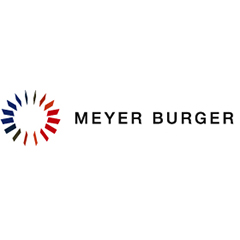At the start of 2016, high-performance, one-hundred-percent Meyer Burger modules will be generating solar energy on the roof of the Migros Aare cooperative. The trend-setting modules making up this solar power plant combine the most innovative cell technology with the state-of-the-art cell connection technology and show which technologies will hold sway in the solar industry of the future.
The Migros Aare cooperative wants to make a contribution to the energy revolution as well as to their autonomous energy supply. The requirements of the innovation project for the solar modules to be installed on the roof of the Migros operations center in Schönbühl (Canton of Berne), Switzerland, were extremely demanding. In Switzerland, only the Meyer Burger modules were able to satisfy these exacting requirements. Since the efficiency of conventional solar cells is bordering on its limits, Meyer Burger has put its faith in the innovative heterojunction technology – and rightly so, as evidenced by the market.
Heterojunction cells are a hybrid form of the two successful silicon solar cells, the crystalline and amorphous silicon solar cells. The combination of these two solar cell types enables an efficiency of well over 21 per cent to be achieved. The unparalleled efficiency of heterojunction technology is based on the utilization of the advantages of the two cell types combined in this solar cell. Up to now, monocrystalline solar cells have been the most efficient solar cells due to their regular crystal structure. Their already high, albeit limited efficiency is again substantially increased through the heterojunction technology thanks to the high temperature resistance and excellent low light behavior of the amorphous solar cells.
In addition to the heterojunction technology, the modules currently being installed on the roof of the Migros Aare cooperative owe their outstanding efficiency to the use of two other trend-setting technologies. Thanks to the SmartWire cell connection technology, the solar modules have a dense contact matrix and their bifacial design enables them to generate electricity on the rear as well as the front. Together, these changes result in a substantial increase in performance compared to conventional solar modules.


























